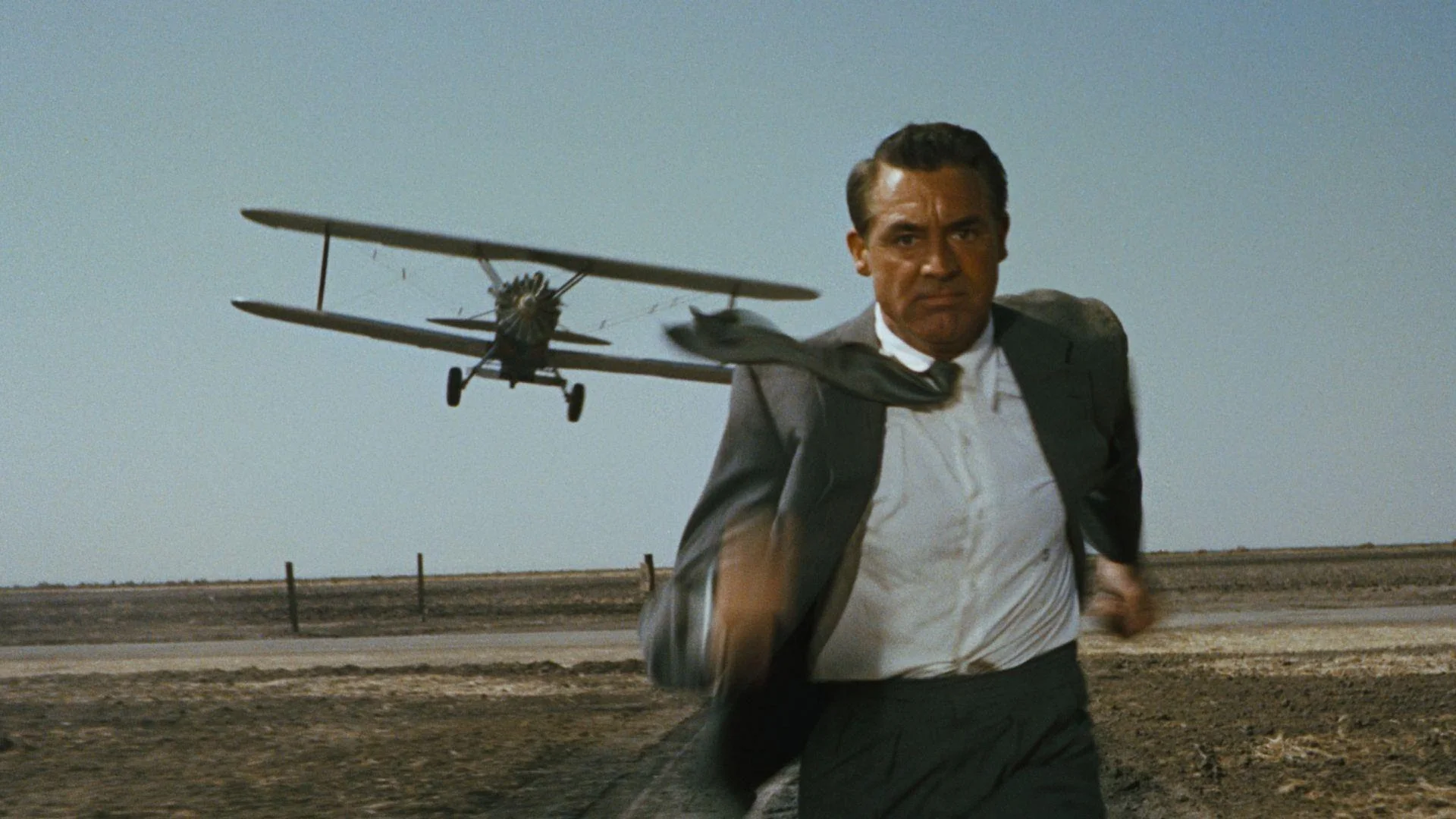Beginner's Guide to Alfred Hitchcock: North by Northwest (1959)
Alfred Hitchcock made many classic films throughout his career. A lot of his films are famous and have entered the cultural lexicon. But if there is one film that is “quintessential Hitchcock” it is most definitely North by Northwest. This 1959 film is influential with many iconic scenes, quotable lines, and memorable characters and many of Hitchcock’s favorite themes, tropes, and motifs. North by Northwest is a great introductory Hitchcock film because it encapsulates everything that one finds lovable about the director. It’s glamorous, thrilling, funny, and suspenseful with just a dash of elegant menace.
Cary Grant stars as ad exec Roger O. Thornhill who gets mistaken for secret agent George Kaplan. Thornhill gets kidnapped by Phillip Vandamm (James Mason), who tries to kill him. Thornhill survives but tries to track down Kaplan. After being accused of murder, Thornhill goes on the run by train, and meets the seductive Eve Kendall (Eva Marie Saint) along the way. As police try to capture him, Thornhill must find the real Kaplan and clear his name. The story has a lot of twists and turns, and it’s very deliberate plotting. However, the film is colored by a number of really strong sequences that work even just as well as individual episodes as they do pieces of the puzzle.
North by Northwest is the best expression of one of Hitchcock’s favorite themes: the wrong man. Hitchcock returned to this well again and again—sometimes directly like in this film and The Wrong Man in 1956, and sometimes in a roundabout way like in Strangers on a Train or Psycho, where detectives are following the wrong case. The wrong man theme puts an everyman into an impossible situation. Thornhill has to become a secret agent himself in order to solve the mystery and clear his name. For all his glamor and sophistication, I think Hitchcock liked placing an ordinary man into a tough situation because the lack of expertise in these situations lent itself to better suspense. Thornhill has to stumble his way through the film because he is so ill-equipped for his situation.
Hitchcock’s direction here completely upstages his previous work simply in terms of scale. Many of Hitchcock’s film are intimate and claustrophobic. But North by Northwest has a large, sprawling landscape. For one thing, Thornhill starts in New York and ends up in South Dakota. And the set pieces here are epic—for sure the crop-dusting scene and the Mt. Rushmore climax are some of the biggest scenes that Hitchcock had ever directed. But even the scene at Mr. Rushmore visitor center, the drunk driving scene, the auction, and the UN segment force Hitchcock to maintain control over a lot of people, some visual effects, and the demands of the story. The film is almost perfectly timed, and it is steadfast in its pace. The film builds and builds to its climax, with each reveal raising the stakes both for the plot and emotionally.
North by Northwest has all of the regular Hitchcock crew members firing on all cylinders. Bernard Herrmann’s delivers a striking, suspenseful score, Edith Head’s costumes are fashionable and chic, Robert Burks captures the wide vistas and cluttered cities equally well, and George Tomasini’s editing highlights the suspense. Screenwriter Ernest Lehman had a notoriously difficult time working with Alfred Hitchcock (as most screenwriters did). Lehman had to reverse engineer the script with Hitchcock giving him ideas for sequences or for wanting to try out certain cinematic tricks. However difficult the writing was, it paid off quite well.
Cary Grant made many classic films (including some with Hitchcock) but I believe North by Northwest is his most celebrated performance. The role lets him play many different character types—hero, clown, victim, drunkard, romantic. Grant is in almost every scene and he owns the screen. By contrast Eva Marie Saint is subdued, letting her lines drip with sexual agency or determined vulnerability. Eve Kendall is a classic Hitchcock Blonde: sexy, mysterious, dangerous, and both hot and cold. These two actors share a firecracker chemistry, and their romance creates a solid backbone for this outlandish spy plot. James Mason plays one of Hitchcock’s best villains, with his polite threats and gentlemanly evil. I also enjoy Martin Landau as the probably queer henchman Leonard, with his coded sexual jealousy and woman’s intuition. Finally, Jessie Royce Landis provides some ace comic relief as Thornhill’s mother.
North by Northwest does feature an element of distaste for police. For one thing, the police are chasing Thornhill erroneously. Also, the CIA is shown to be somewhat callous in their handling of their spies. That is another example of this film tying together many of Hitchcock’s favorite elements. The film turned out to be a huge success both critically and commercially. The film is truly influential; I think we can trace the James Bond movies to this film adding panache and style to spy films. And even Guardians of the Galaxy Vol. 2 features a direct homage. Ernest Lehman reportedly said he wanted North by Northwest to be the Hitchcock film to end all Hitchcock films. Well, the director went on to make some good films after North by Northwest. However, none of them were like this one. This is the film that says goodbye to 1950s-era Hitchcock.





